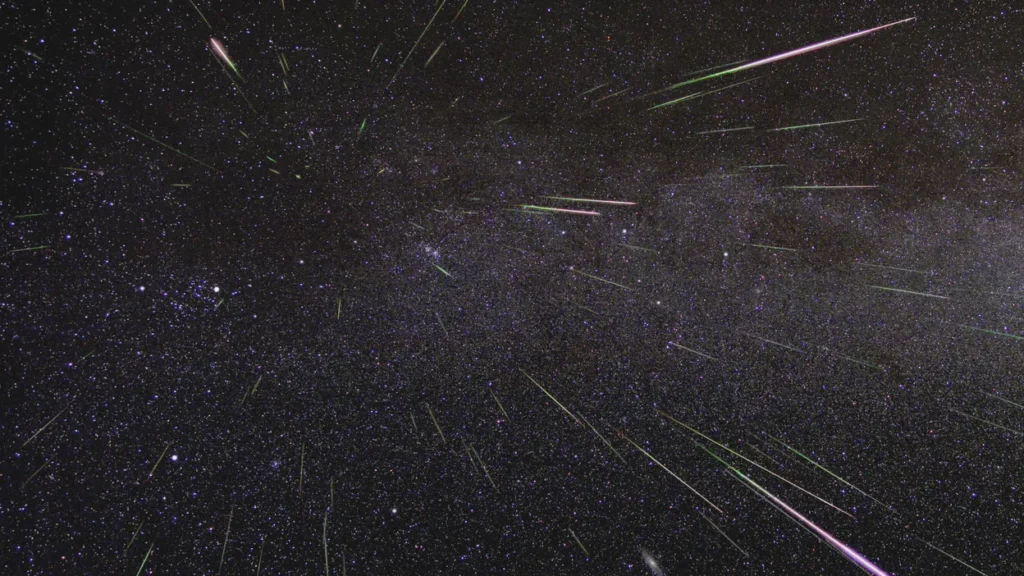An overview of the summer meteor shower
Dr. Achim Tegeler, July 01, 2024
The Perseids are probably the most well-known recurring meteor shower. It triggers the shooting stars that can be observed well in August. The name "Perseids" derives from the direction the shooting stars seem to come from, the so-called radiant in the constellation Perseus next to Cassiopeia and Carmelopardalis. In fact, the Perseids are remnants of the dust tail of comet 109P/Swift-Tuttle, which as a short-period comet returns to the vicinity of the Earth's orbit about every 133 years on its highly eccentric orbit around the Sun [1]. With a very small distance to the Earth's orbit, it is one of the Near-Earth Objects (NEOs) [2] that could potentially impact Earth in the distant future. The comet has a diameter of about 26 km and was last observed near Earth in 1992; it is expected again in 2126.

What we can observe as shooting stars, i.e. short flashes in the sky, is on average a light up of gas molecules in the upper atmosphere lasting only about 0.7 seconds, which are ionized by the high speed (approx. 60km/s) of the dust particle and release the absorbed energy in the form of light (photons) – the ionization glow. Depending on the size of the particle, the glowing sometimes takes longer or even shorter. Contrary to the widespread assumption, we do not see the "burning up" of the causative dust particle [3].
Since the Perseids therefore occur by the Earth "flying" through through the comet's dust tail, a longer period of time is also associated with visible meteors due to the expansion of the dust tail – the Perseids therefore occur between July 17 and August 24 and peak around August 12.
Although the Perseids are certainly the best-known meteor shower, there are certainly more active meteor showers that can be expected to have more shooting stars – the number of theoretically possible luminous phenomena per time is called the Zenithal Hourly Rate (ZHR). The Perseids show an average ZHR of 100. However, even more active meteor showers such as the Geminids (ZHR 150-190) and the Quadrantids (Bootids – ZHR approx. 110) are located in the cold winter and are therefore less noticed by the public. Unlike the Perseids, these two meteor showers do not have their origin in the crossing of a comet's orbit, but in the piercing of an asteroid dust trail. The effect is the same; the particles penetrate the upper layer of the atmosphere and trigger the ionization glow at an altitude of about 100 km.
The Perseids can be observed with the naked eye and particularly well in the second half of the night during the maximum around August 12th. If possible, go to a dark place and watch the spectacle comfortably on a deck chair.
Further links:
[1] Comet 109P/Swift-Tuttle: https://en.wikipedia.org/wiki/Comet_SwiftTuttle
[2] Near-Earth Objects: https://cneos.jpl.nasa.gov/about/basics.html
[3] Ionization trails: https://en.wikipedia.org/wiki/Ionization